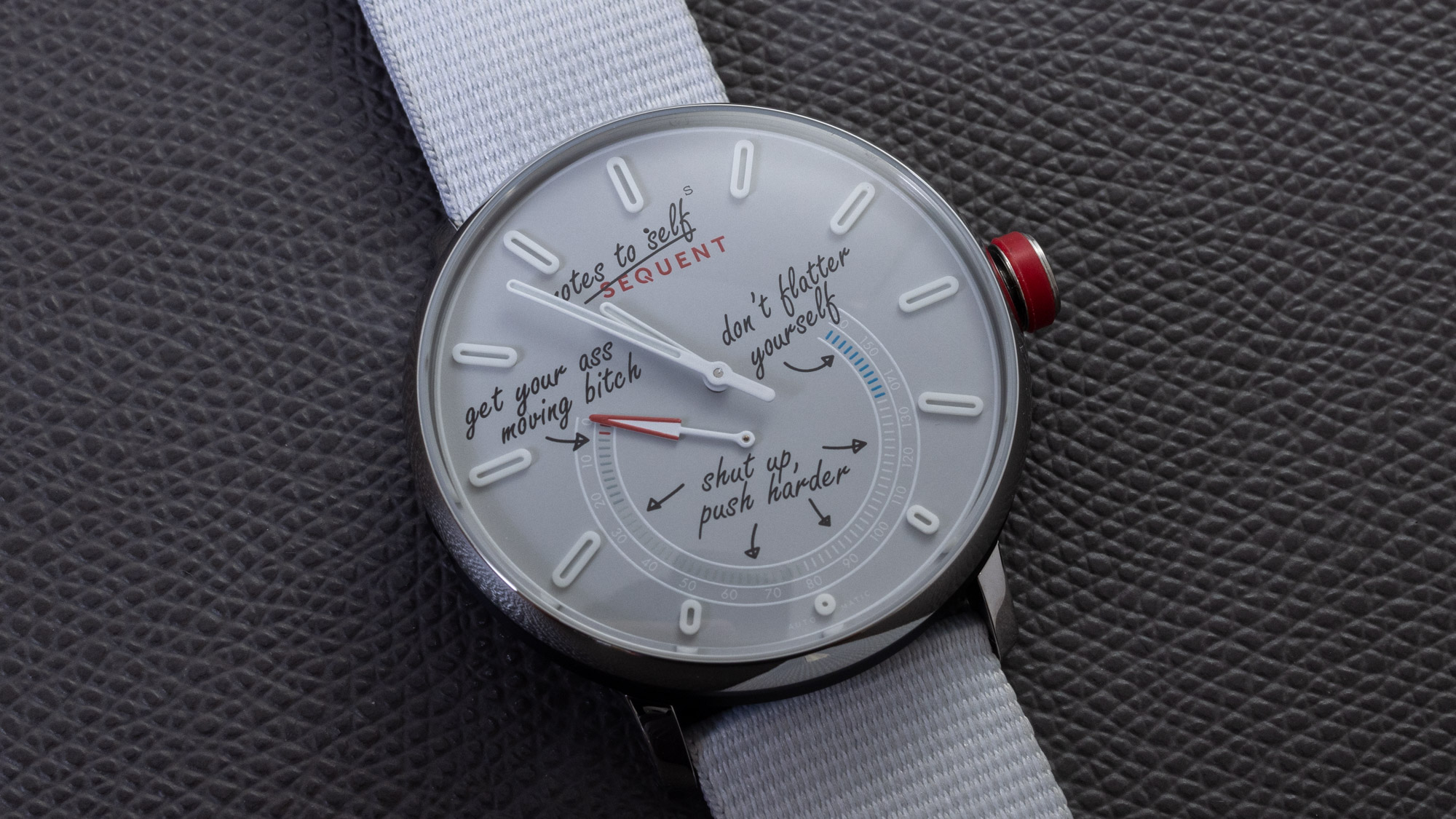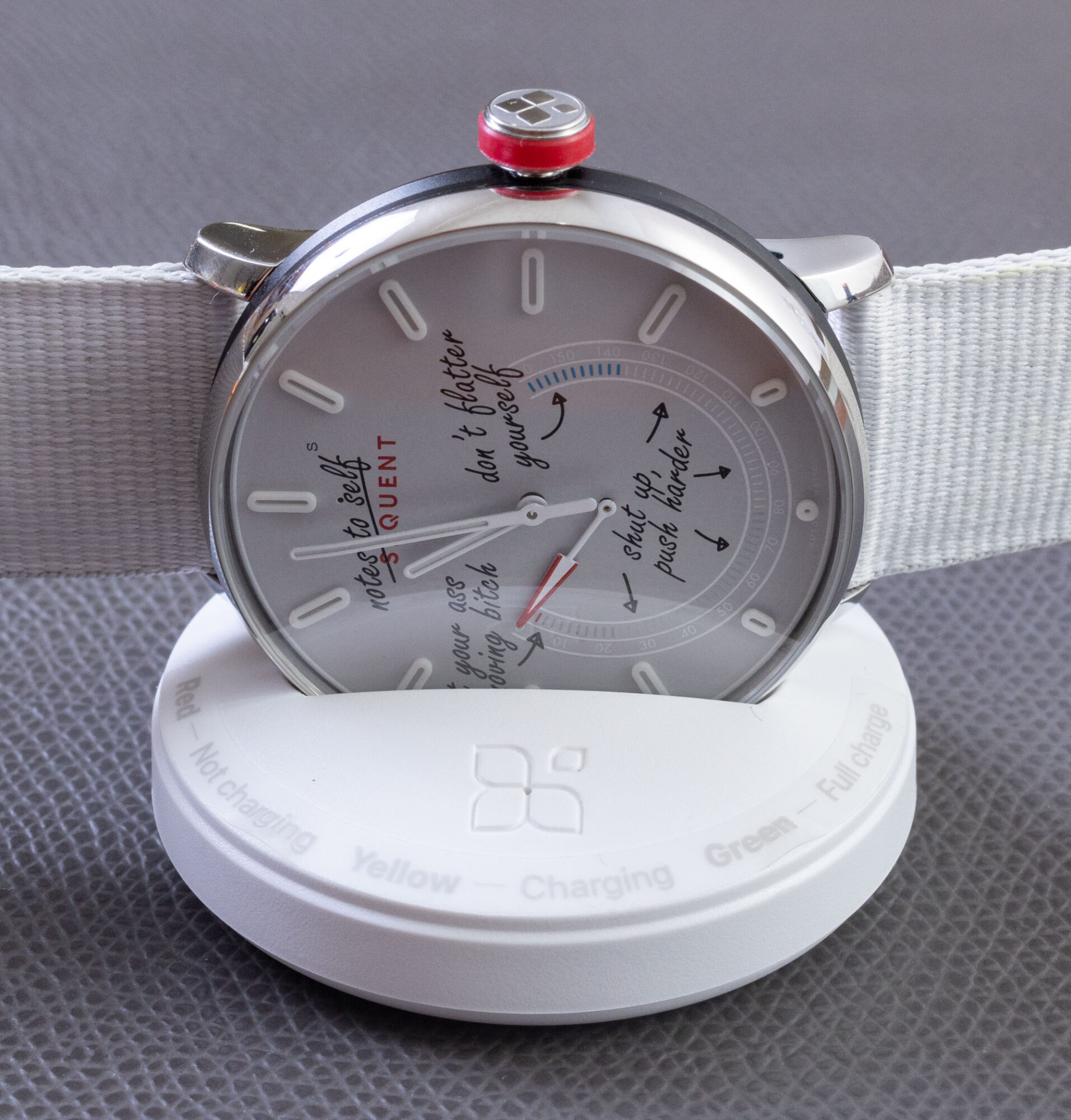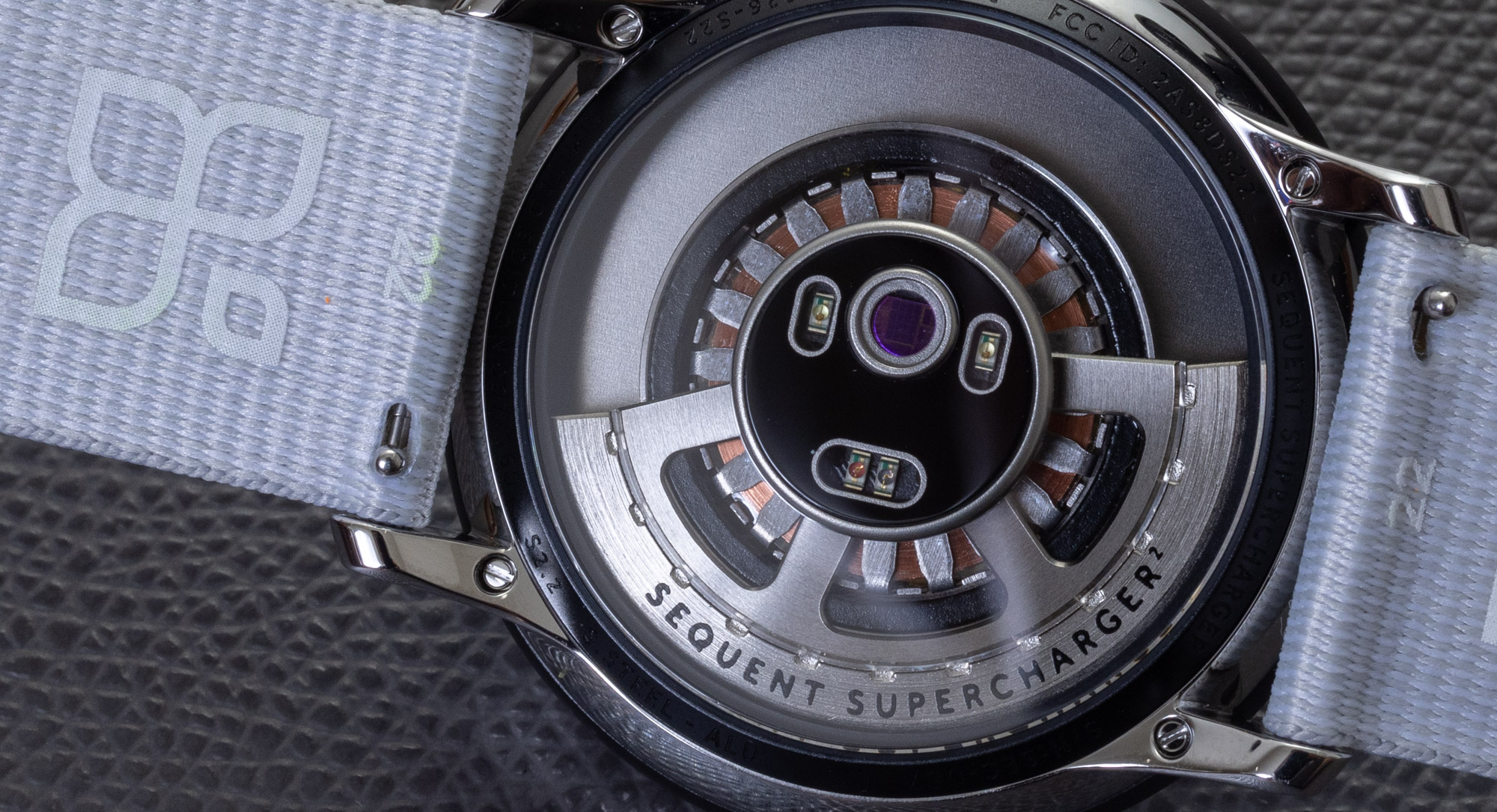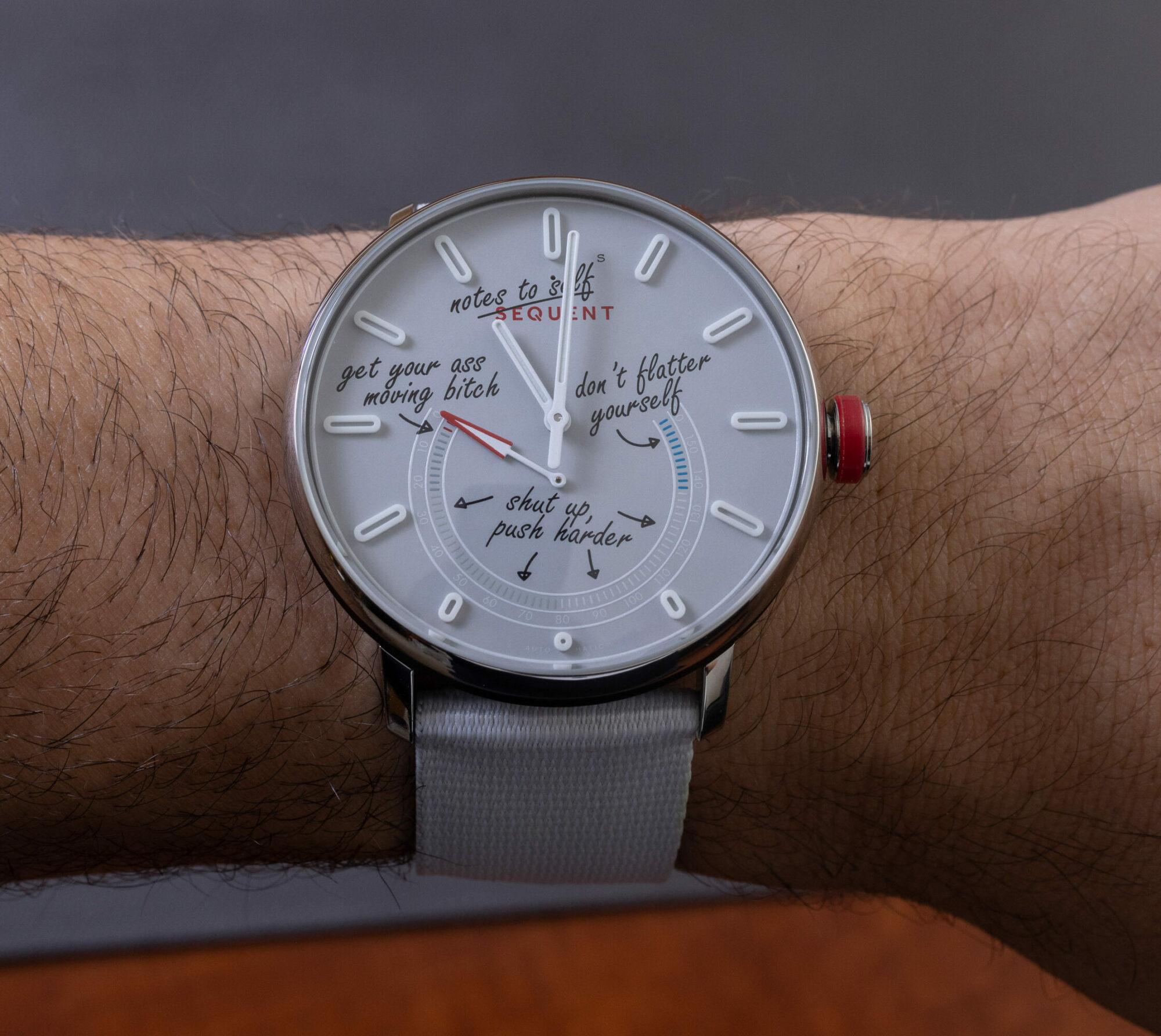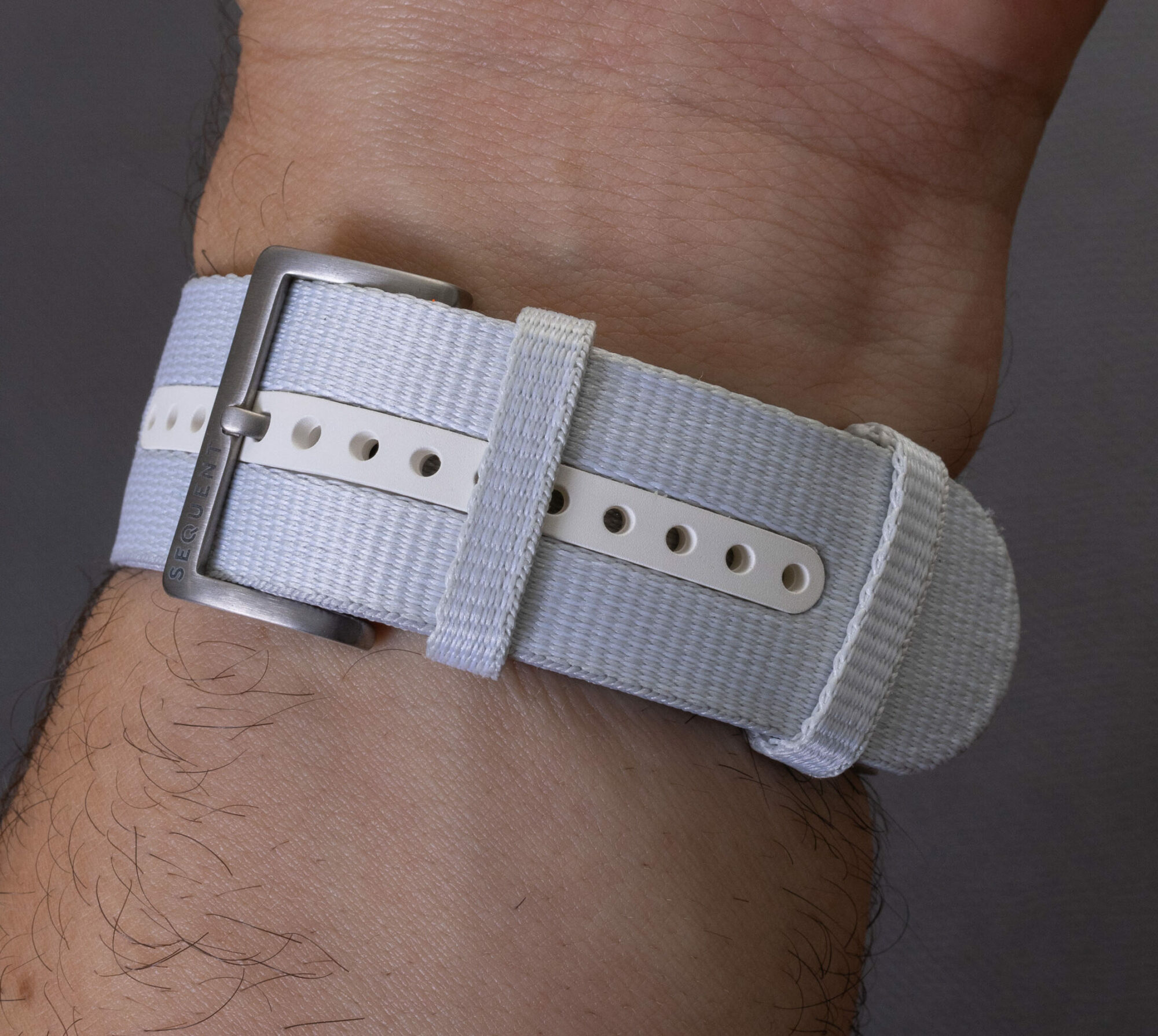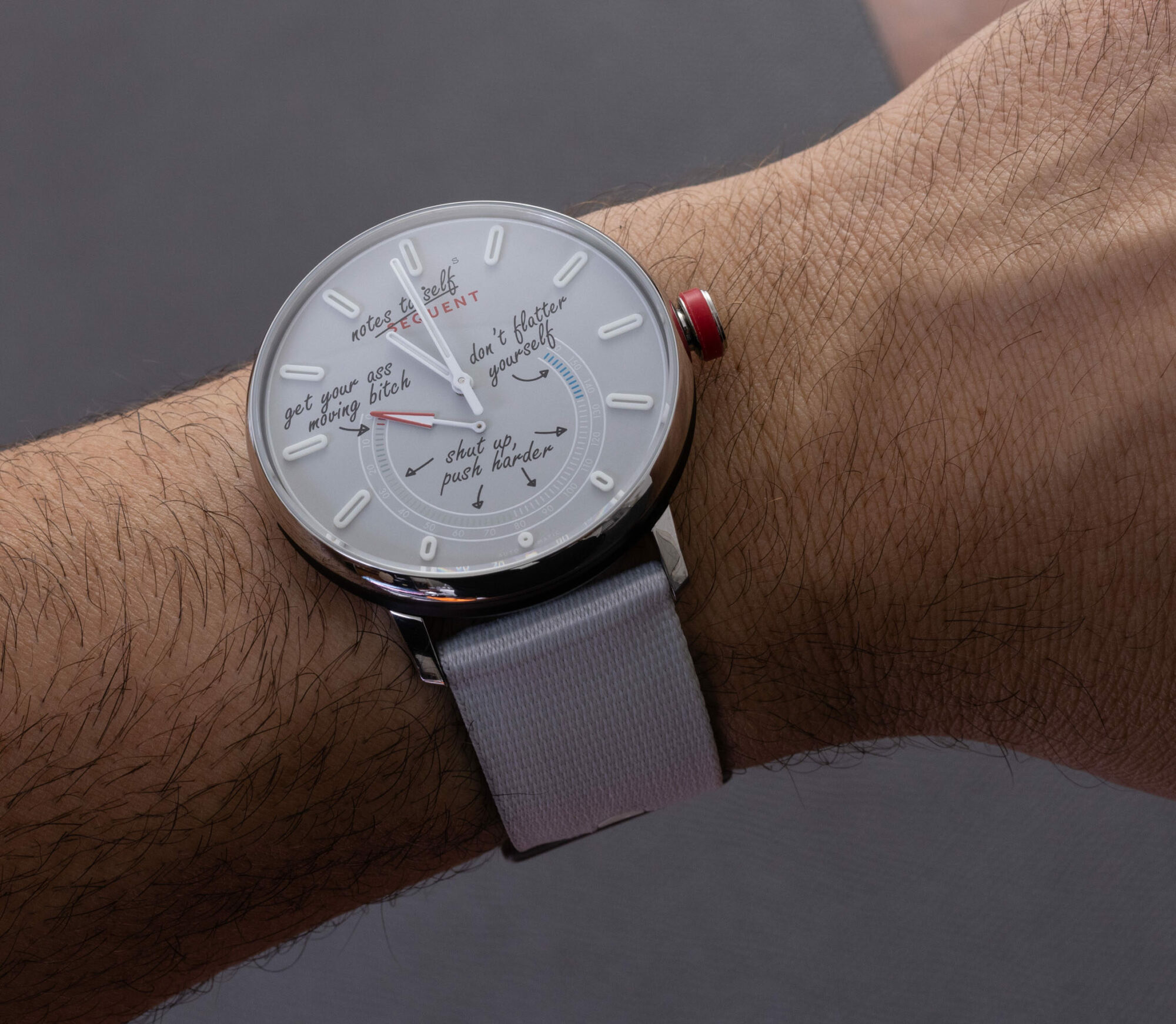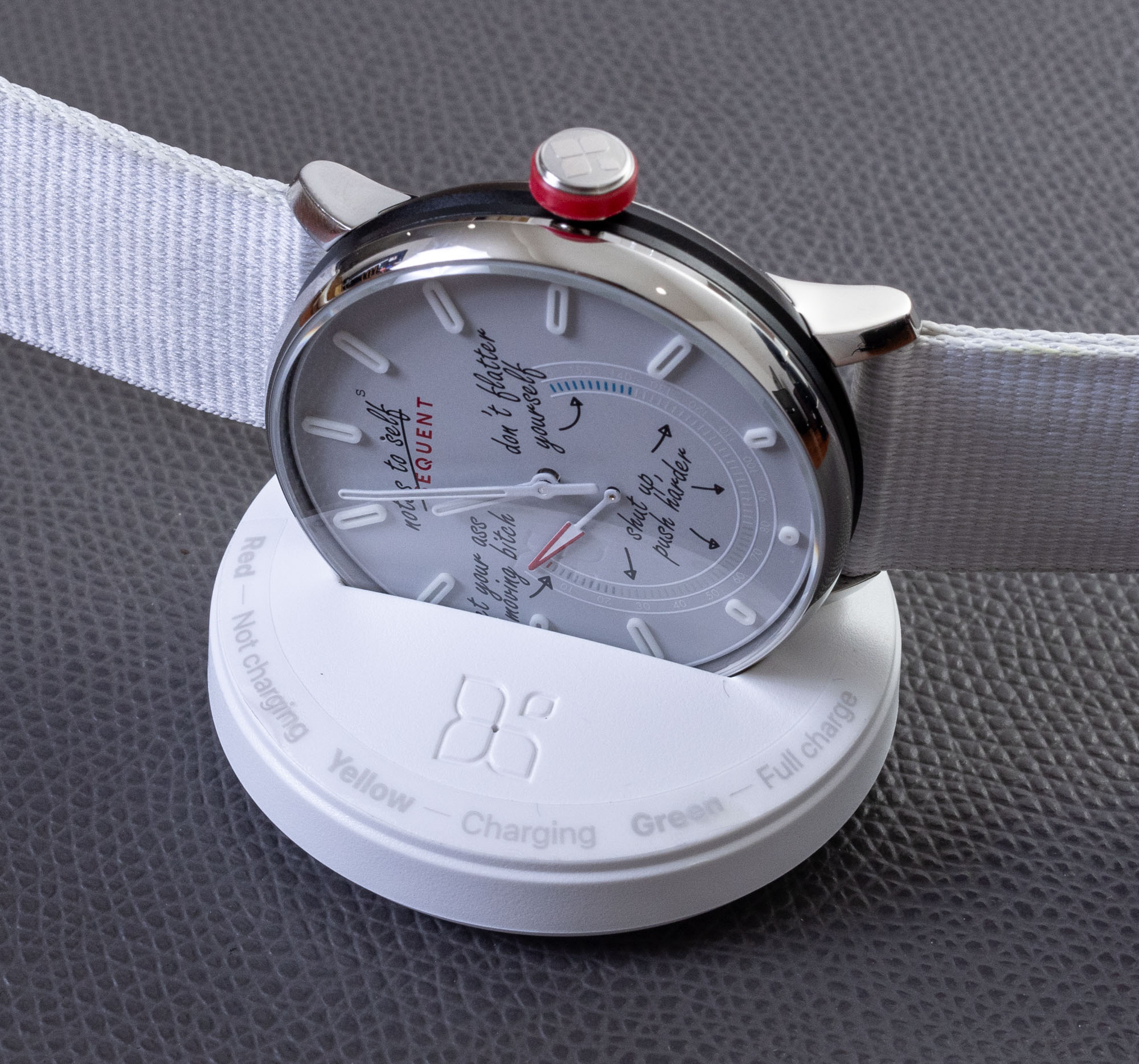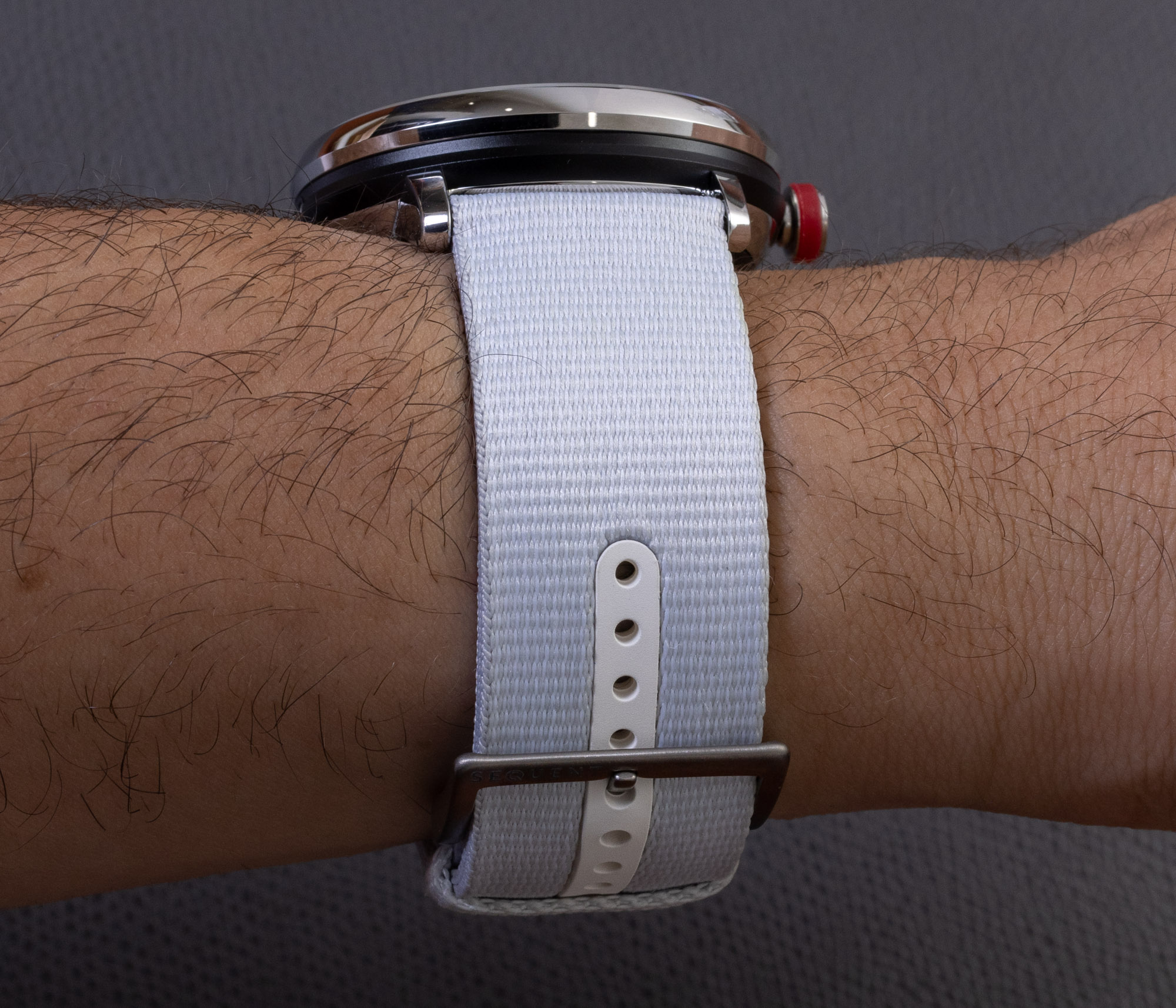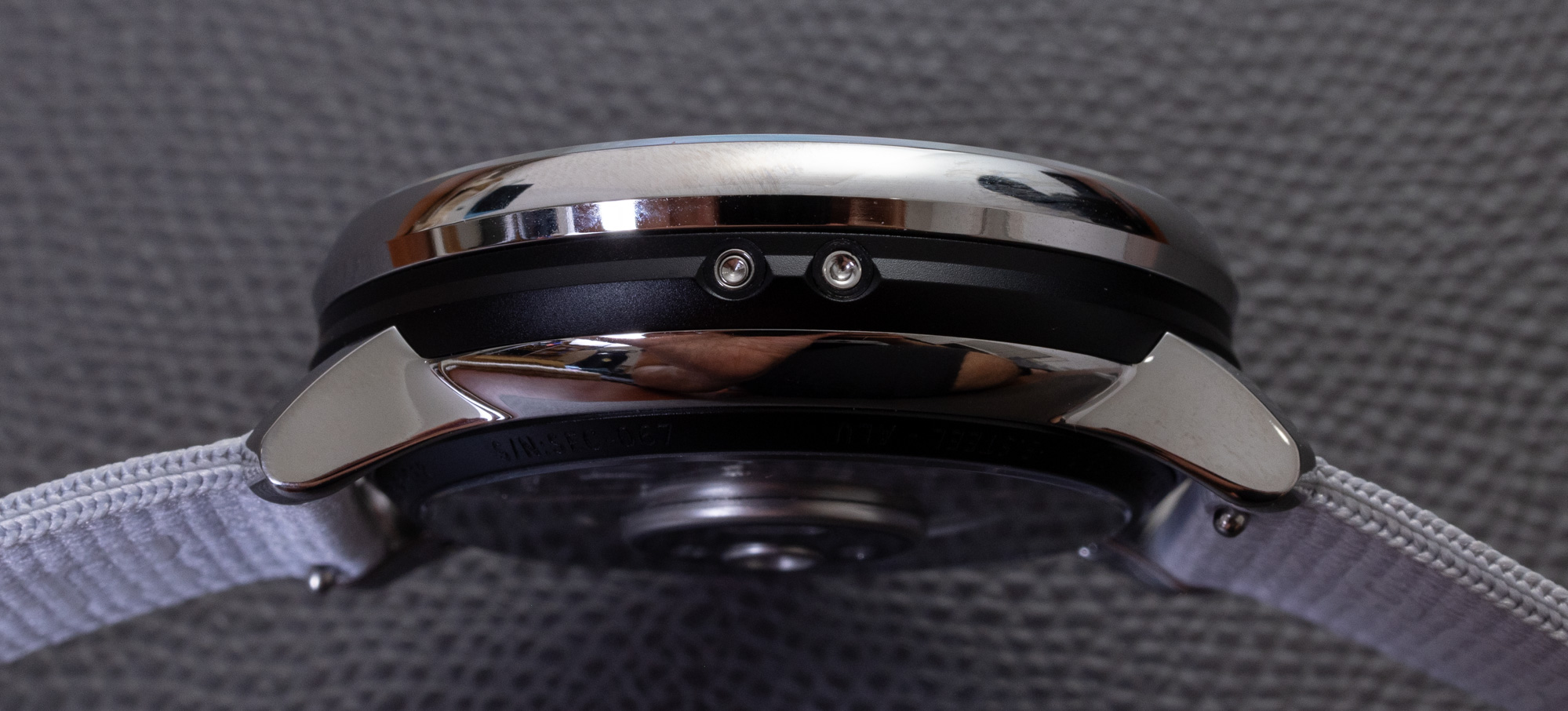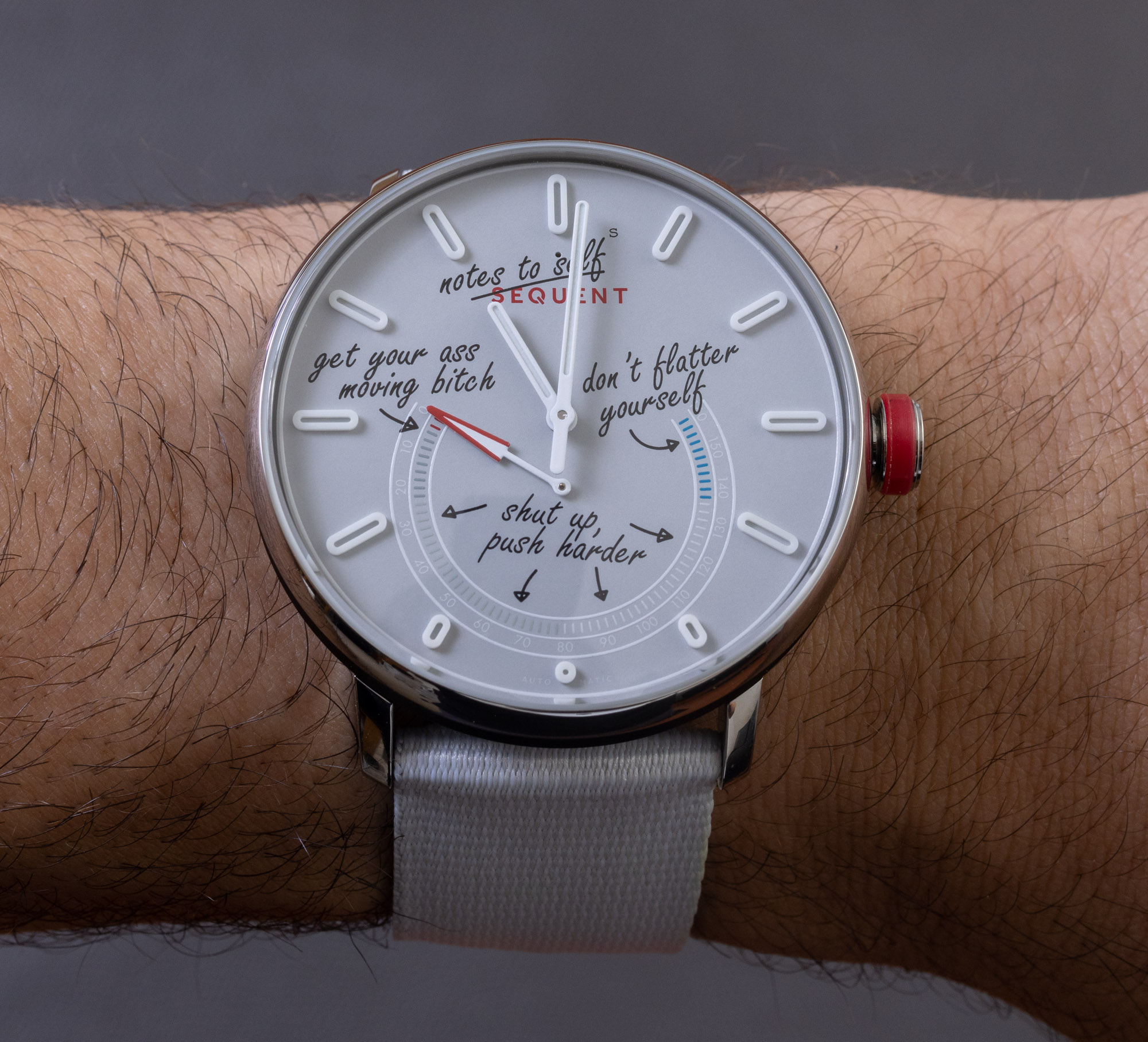
The problem with smartwatches, if I may, is that unless you’re willing to double-wrist, they get in the way of real watches. The added problem with smartwatches for watch enthusiasts is that they lack a soul, which is a poetic way of lamenting their digital insides. If you can imagine it, there’s even more trouble when you get into owning a lot of timepieces: wearing a smartwatch in rotation necessarily means that you can’t capitalize on the offerings of the smartwatch. How can a brand find balance here, and satisfy the watch enthusiasts who want something more from a smartwatch—not alerts and apps and cellular connectivity, but a smartwatch that can fit into a rotation or even be a single watch that would satisfy an enthusiast? That’s what Sequent smartwatches have aimed to do, with a traditional dial layout, and—here’s the neat part—a proper rotor that powers the watch by kinetic energy. Now, though, Sequent has teamed up with Romaric André aka seconde/seconde/, one of the most in-demand designers out there, for a hilarious take on the entire smartwatch genre.
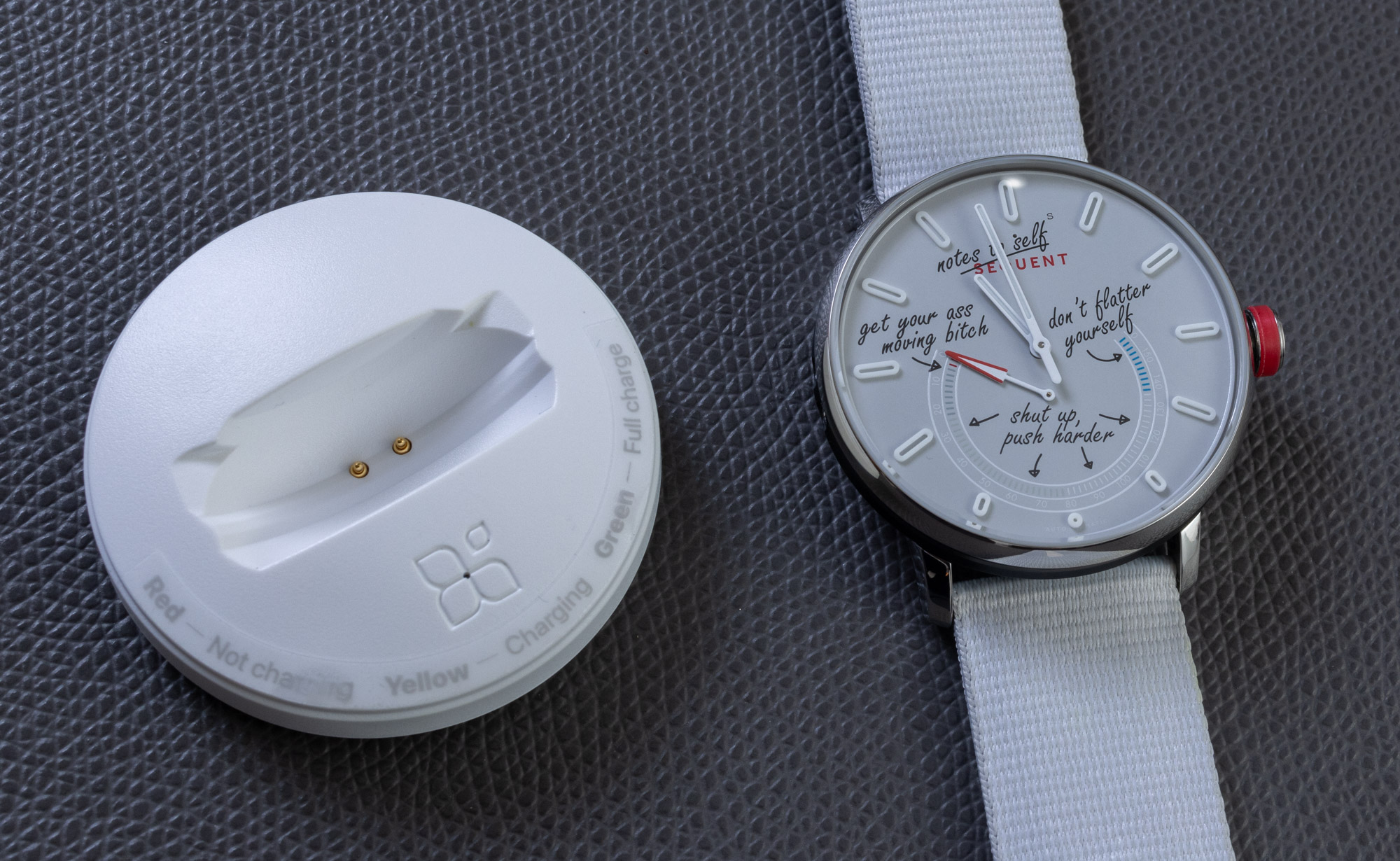
The brand started out making replacement hands for vintage Rolexes, shaped like 8-bit swords, clouds, hourglasses, and more. But within the last year or two, André has been approached by and collaborated with several brands, including Louis Erard and H. Moser. This partnership, though, is a bit different. Instead of a snarky hand or a wry redesign, the designer has effectively taken a pen to the dial of a white-dial Sequent Elektron, at once playing commentator and personal trainer. The dial, which features 3D applied Super-LumiNova markers and lumed hands, is scrawled with smartass “notes to self,” encouraging its wearer to do better, no matter how well they might already be doing. Functionally, the dials are similar to other analog smartwatch displays. The tracking scale can display multiple types of information; while goal progress and SpO2 is displayed as a percentage with a max of 100, heart rate can be displayed as high as 160 (above which you are tachycardic or dead). There’s a small dot you may notice at 12, which is the aperture for the LED that flashes when the watch is syncing or taking a reading from its sensor. Most smartwatches are used as fitness trackers by those who wear them, if not all the time, at least on occasion. The collaboration with seconde/seconde/ has yielded something that most of those devices lack: motivation (with a smirk).
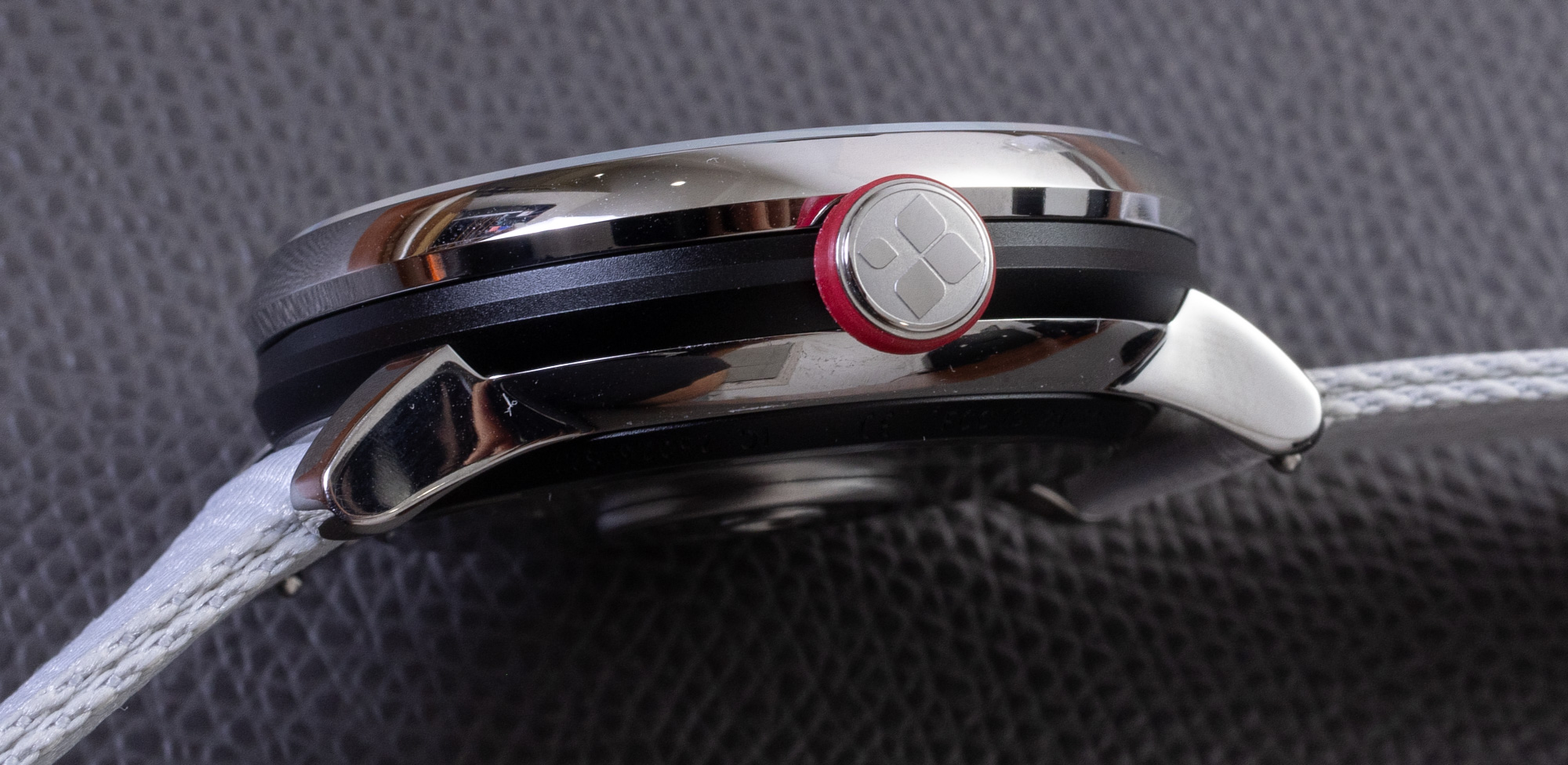
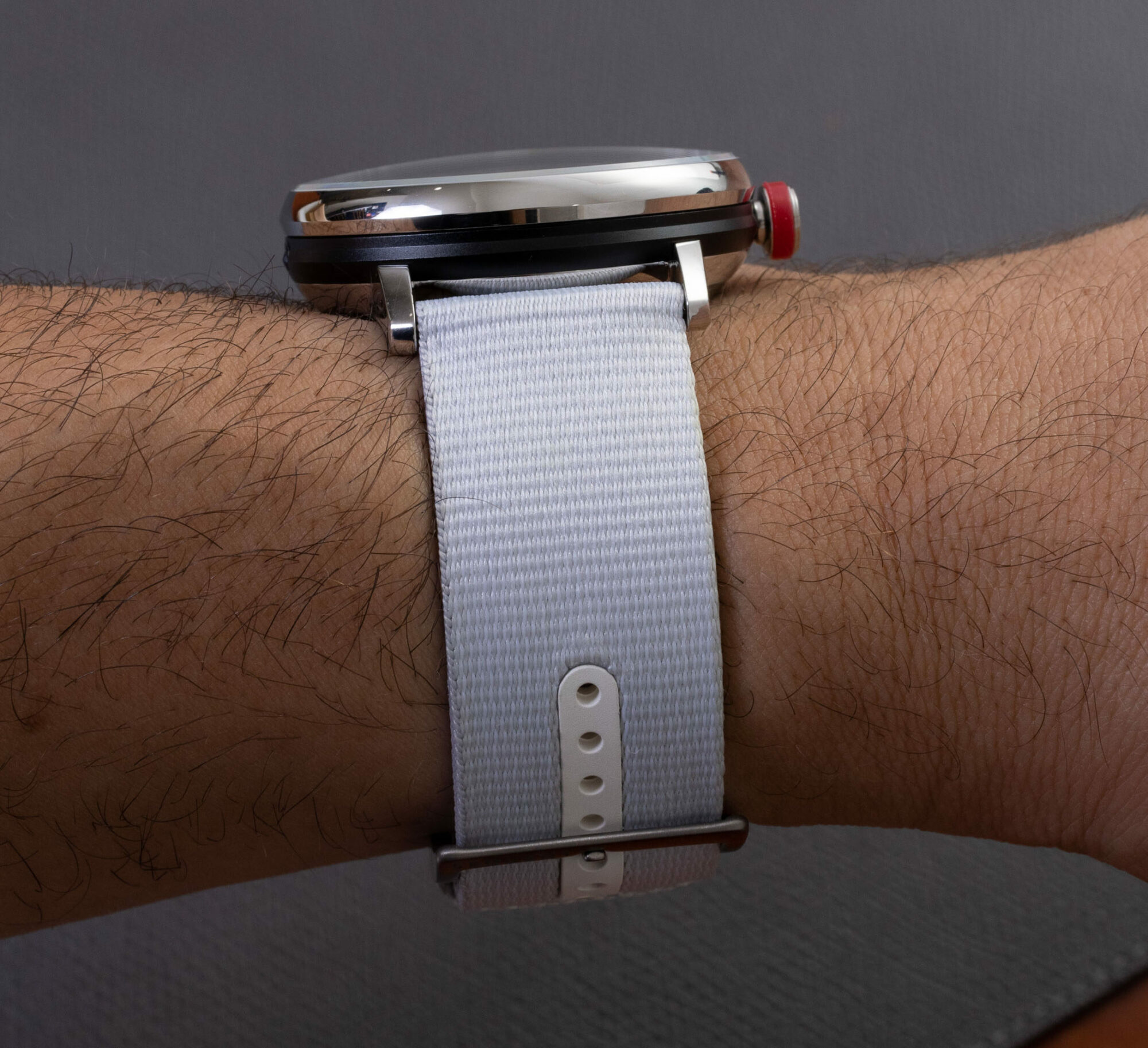
The Sequent Smart(ass) features a unique case/dial configuration from the smartwatch brand. Typically, the dials with applied markers only come with a fully brushed titanium case; the Sequent Smart(ass) case is polished steel and features a black anodized aluminum caseband. In my opinion, it’s the more attractive Sequent case (though I’ll be honest and say that the perfect option–titanium with the black caseband—does not exist). The case’s dimensions aren’t friendly on paper—42.1mm-wide, 14.3mm-thick, and 45.5mm lug-to-lug—but the shorter, sloped lugs that drop below the caseback help it to wear comfortably on the wrist, however tall it may stand. The crown has a rubber grip and is used to sync the watch to the partner app; depending on how many times it’s pushed, it will allow the watch to display the percentage of various daily goals, heart rate, and blood oxygen level expressed as SpO2. The 22mm white strap is made in partnership with #tide, which uses recycled plastics to make straps for quite a few brands these days. It’s a bit stiff out of the box but breaks in with some wear; quick-release pins mean it’s easy to swap out, and I’ll disclose that I found it more comfortable on a rubber strap, though displeasingly tall on a pass-through.
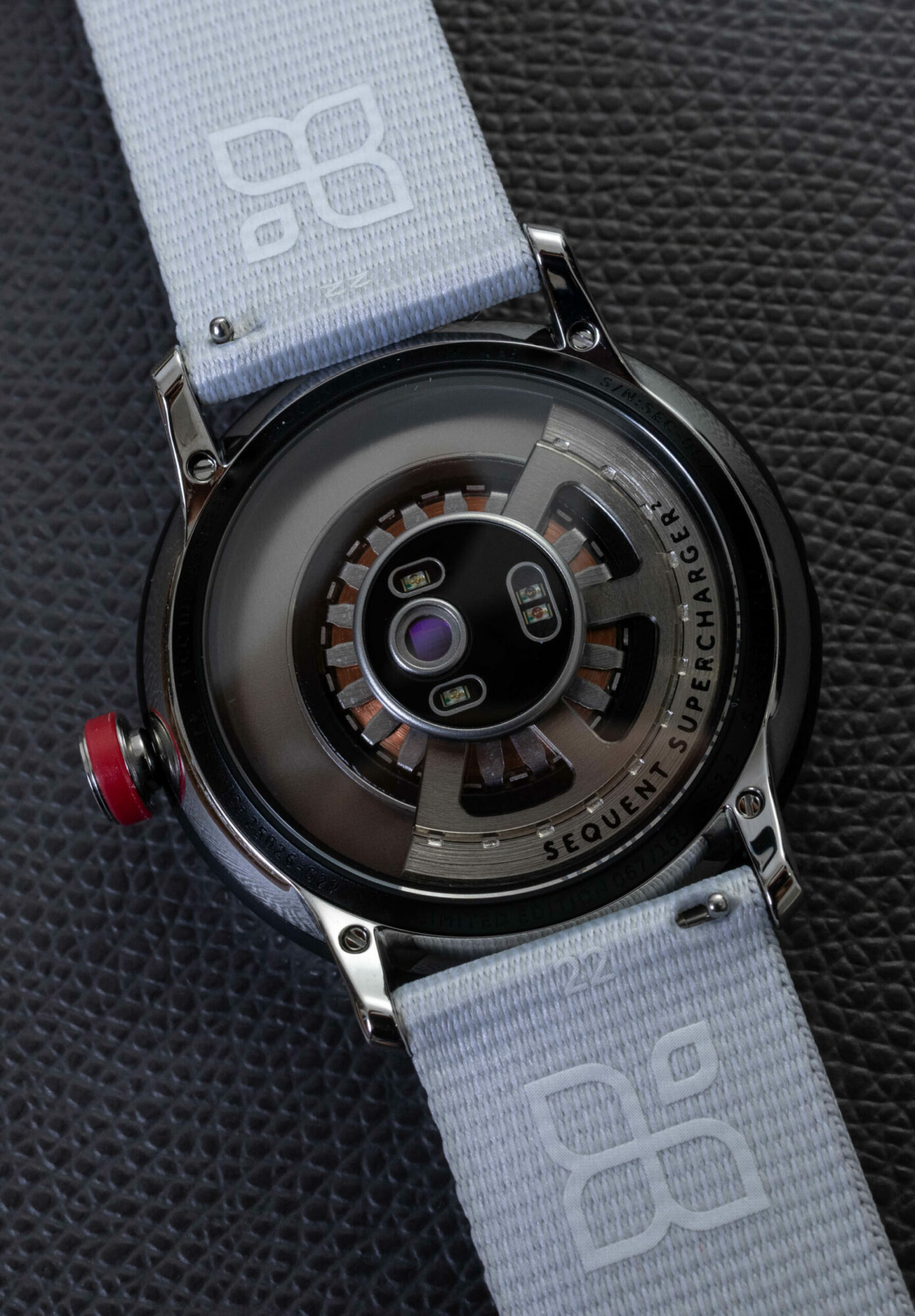
Never minding the limited seconde/seconde dial, the in-house Sequent SC 2.2 movement is really the star of the show, from a watch lover’s perspective. It uses a traditional rotor made of tungsten to generate power from the movement of the wrist and turns it into stored electricity for the watch (similar to Seiko Kinetic movements). In the center, of course, is the sensor, which protrudes from the watch but doesn’t add any discernible height when on the wrist. The watch is accurate to -/+ .3 seconds per day and, while the watch can be in standby mode for up to 18 months, it can last up to 30 days even when it’s tracking your heart rate every 30 minutes. If it drops below 10% it will go into time-only mode, a nice power-saving feature that does its best to keep the watch from fully dying before you get it back on the included charging stand. The watch syncs to a companion app, Oxygo, which displays all your data over time and can sync with Apple’s Health app. With the watch, the app tracks sleep (if you wear it overnight, obviously), the aforementioned health metrics, and workouts (with GPS). The app is easy enough to figure out, though I would’ve liked a proper user manual (and I have to admit, despite always working out, I did not experiment with the workout feature).
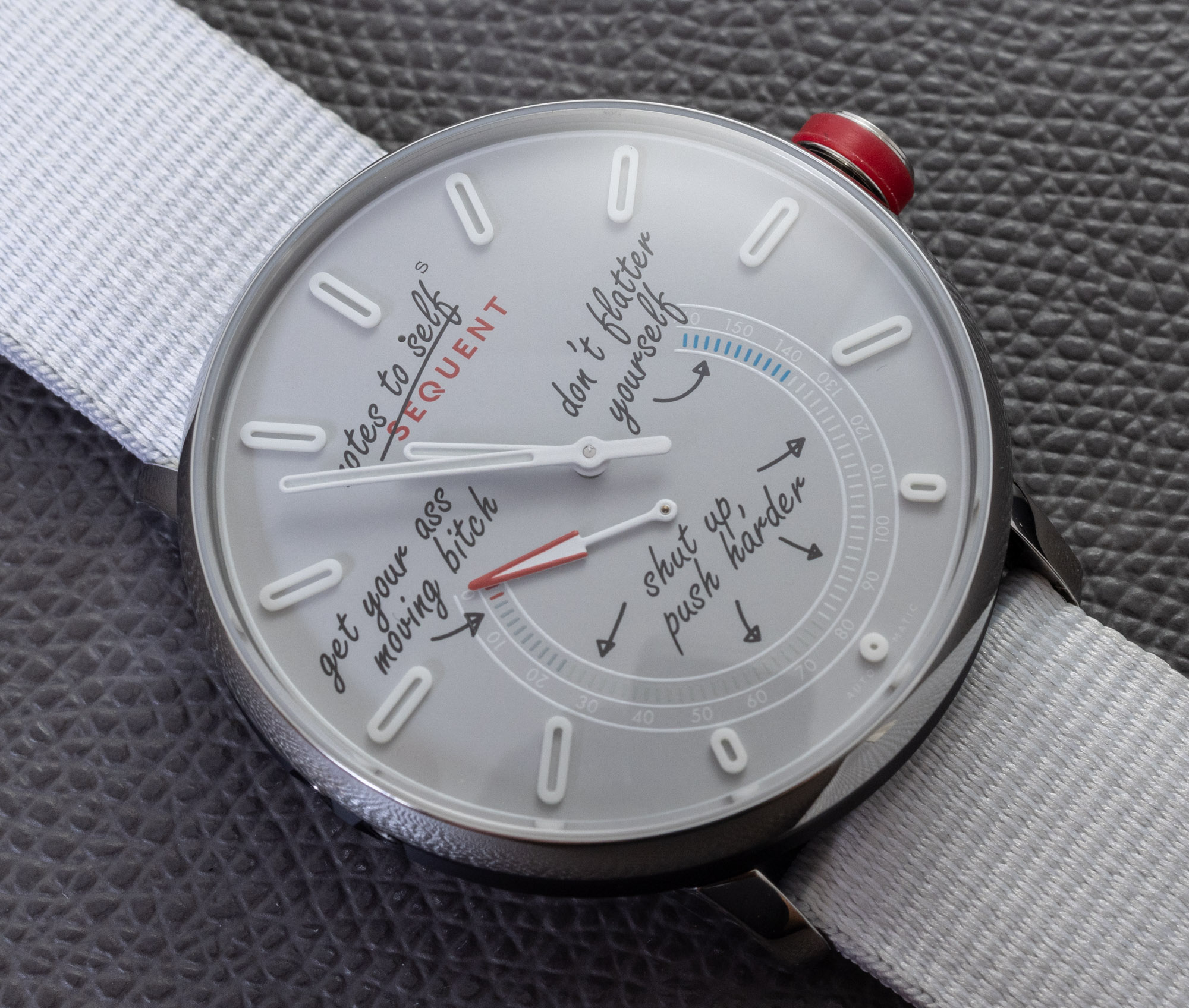
These days, there are so many smartwatch and fitness tracker options that it’s almost overwhelming. There’s something for everyone, from super-slim bracelets to smartwatches that do everything, including taking calls. There’ve been efforts by several brands to make smartwatches with analog displays; they’ve succeeded in providing the look but not the soul of a mechanical watch. Sequent has made a strong attempt at addressing that gap in the smartwatch market with its kinetic rotor. It still faces a steep slope: To benefit most from it, one must wear it all the time, but the watch is targeted at those who want the rotor, and those are usually people with multiple watches who can’t fathom wearing a single watch all the time. The Smart(ass) model goes a step further, though, not only filling the gap but doing so with a tongue-in-cheek dial that pokes fun at the entire idea of a fitness tracking smartwatch. A bit of lighthearted fun never hurt, right? The Sequent Smart(ass) Watch is limited to 160 pieces and priced at $549. For more information please visit the Sequent website.

